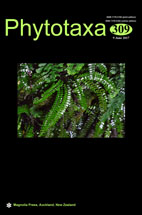Abstract
The Atlantic Forest is one of two biodiversity hotspots in Brazil (Mittermeier et al. 1997, Myers et al. 2000). It is the second most diverse (Forzza et al. 2010) and threatened biome because only ca. 11.7% of the Atlantic Forest remains (Ribeiro et al. 2009). Annonaceae are well represented in the Atlantic forest with 92 species, of which 71 are endemic (Maas et al. 2015). In the State of Espírito Santo, there are 12 genera and 44 species (Maas et al. 2015). The majority of genera in Annonaceae that occur in Brazil are represented in Espírito Santo, but previously there were no records of Trigynaea Schlechtendal (1834: 328) for the State.

